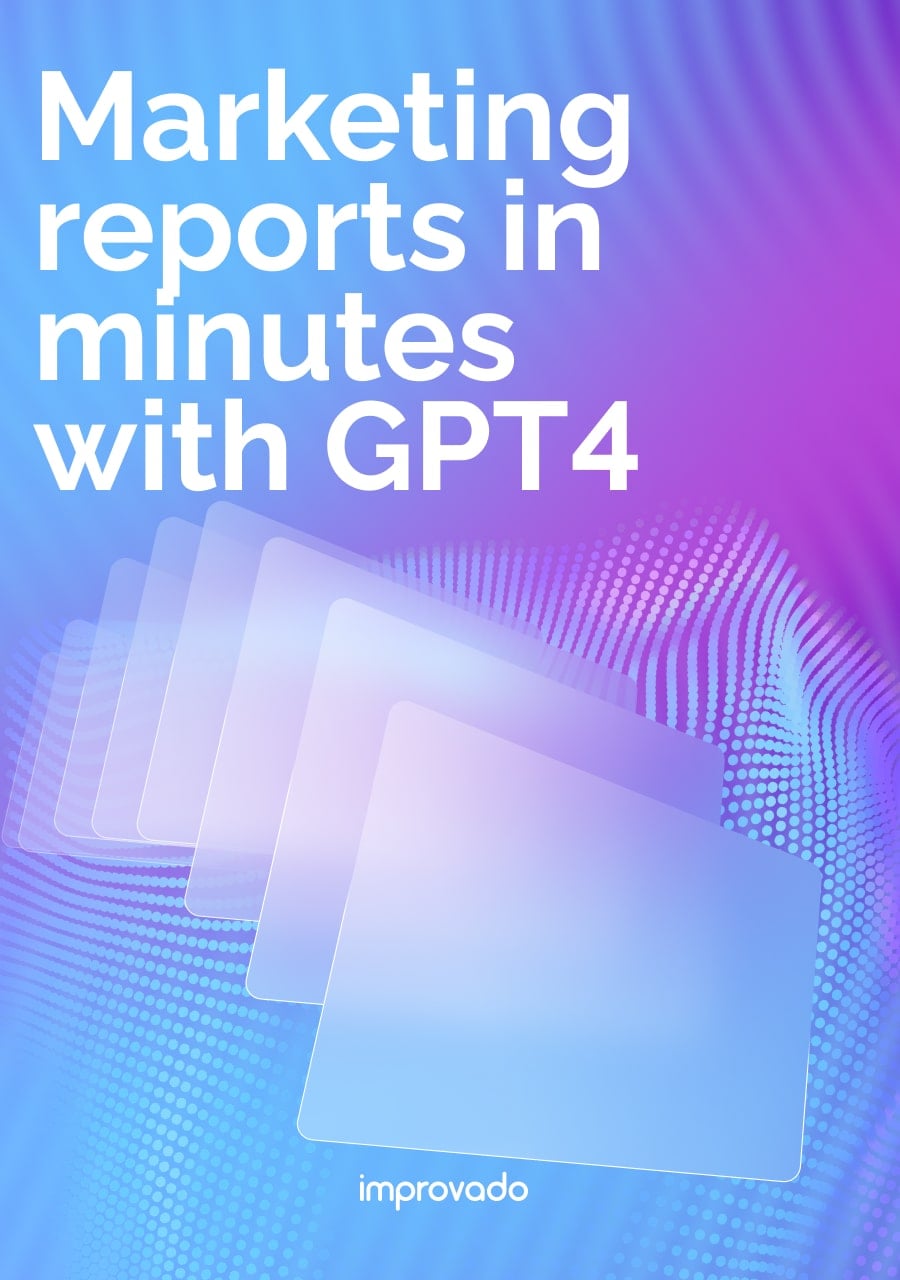Choosing the right marketing channels is a critical decision for any business. It determines how you connect with customers. It's the difference between a message that resonates and one that disappears into the noise. An effective marketing plan depends on selecting the best paths to reach your target audience, share your value, and fuel business growth.
This guide provides a complete overview of the most effective marketing channels. We cover how to choose the right mix for your business. And we explain the best ways to measure success for a truly data-driven approach. Understanding these channels is the first step toward building a resilient and profitable marketing function.
Key Takeaways:
- A marketing channel is the medium or platform a business uses to communicate its message to a target audience. It is distinct from a marketing strategy, which is the overall plan.
- Channels are broadly split into digital (like SEO, social media, PPC) and traditional (like TV, print, direct mail). Most successful strategies use a mix of both.
- Choosing the right channels requires analyzing your business goals, budget, target audience, and competitors. There is no one-size-fits-all solution.
- Measuring performance is vital. Metrics like ROI, CAC, and CLV help you optimize your channel mix. Unifying cross-channel data with tools like Improvado is crucial for accurate insights.
- An omnichannel strategy, which integrates multiple channels for a seamless customer experience, delivers the strongest results in today's market.
What Is a Marketing Channel?
A marketing channel is any touchpoint where a customer can interact with your brand. It’s the pipeline through which you deliver your value proposition.
For example, your blog is a content marketing channel. Your Instagram profile is a social media marketing channel. Both serve to connect you with your audience in different contexts.
Marketing Channel vs. Distribution Channel
It's easy to confuse these two terms, but they serve different functions.
- A marketing channel is about communication. It’s how you tell customers about your product.
- A distribution channel is about logistics. It’s how the product physically gets to the customer.
For example, Amazon is a marketing channel (via ads) and a distribution channel (via its marketplace and delivery network).
Marketing Channel vs. Marketing Strategy
A marketing strategy is your high-level plan. It answers the big questions. Who are we targeting? What do we want to achieve? What is our core message?
A marketing channel, on the other hand, is a tactic. It is a specific platform you use to execute that strategy. Your strategy might be to become the leading voice in your industry. Your channels to achieve this would include content marketing, SEO, and LinkedIn.
The Fundamental Types: Digital vs. Traditional Marketing Channels
Marketing channels are divided into two main categories: digital and traditional.
Each has a distinct role. The best choice depends on audience behavior, campaign goals, and how you measure success.
Modern marketers rarely choose one over the other. The most effective strategies blend both.
Understanding Digital Channels
Digital marketing channels include all online efforts. They are highly measurable and allow for precise targeting. These channels are agile, often cost-effective, and provide real-time feedback.
Examples include search engines, social media platforms, email, and websites. They are the backbone of most modern marketing plans.
Understanding Traditional Channels
Traditional marketing channels operate offline. They are excellent for building broad brand awareness and establishing credibility.
Think of TV commercials, radio ads, print magazines, and billboards. While harder to measure precisely, they remain powerful for reaching large audiences and making a memorable impact.
Why an Integrated Approach is Essential
An integrated approach combines the strengths of both digital and traditional channels. You can use a TV ad (traditional) to drive viewers to a specific landing page (digital). You can run a print ad with a QR code that leads to your app.
This creates a more holistic and effective customer experience. Combining channels reinforces your message and reaches customers wherever they are.
A Deep Dive into 10 Essential Digital Marketing Channels
Digital channels offer diverse ways to reach and engage a target market online. They are central to generating leads, building communities, and driving sales in today's economy.
Here’s a closer look at the most important ones.
1. Search Engine Optimization (SEO)
SEO is the process of optimizing your website to rank higher on search engines like Google. The goal is to attract organic, high-intent traffic. When users search for terms related to your business, you want to be the first result they see.
SEO is a long-term investment that builds authority and sustainable traffic. For any business with a website, SEO is not optional; it's essential.
2. Pay-Per-Click (PPC) Advertising
PPC is an advertising model where you pay a fee each time someone clicks your ad. The most common form is search engine advertising (e.g., Google Ads). PPC offers immediate visibility at the top of search results. It is highly measurable and allows for rapid testing and optimization. It's perfect for driving targeted traffic for specific campaigns or promotions.
3. Content Marketing
Content marketing involves creating and sharing valuable free content. This includes blog posts, videos, podcasts, and whitepapers. The goal is to attract and retain a specific audience.
Great content builds trust, establishes authority, and educates potential customers. It fuels other channels like SEO and social media. A strong content marketing strategy is foundational to digital success.
4. Social Media Marketing (Organic & Paid)
This channel uses platforms like LinkedIn, Instagram, Facebook, TikTok, and X to connect with an audience.
- Organic social media involves building a community and sharing content without paying for promotion.
- Paid social media involves running targeted ad campaigns to reach specific demographics and interests.
The key is choosing the platforms where your audience spends their time and measuring your social media ROI is critical for success.
5. Email Marketing
Email marketing remains one of the most effective channels. It involves sending targeted messages directly to a list of subscribers. You can use it to nurture leads, announce new products, share content, and promote sales.
Because you own your email list, it is a stable and reliable communication channel that is not dependent on third-party algorithms. Its ROI is consistently among the highest of all marketing channels.
6. Affiliate & Partner Marketing
Affiliate marketing is a performance-based channel. You partner with affiliates (like bloggers or publishers) who promote your product. You pay them a commission for each sale or lead they generate. It’s a low-risk way to expand your reach.
Partner marketing is a broader collaboration with another brand that has a similar audience, often involving co-branded content or campaigns.
7. Influencer Marketing
This channel involves collaborating with individuals who have influence over your target audience. Influencers promote your brand to their followers, lending you their credibility and reach.
It's particularly effective in B2C industries like fashion and beauty. It is also growing in B2B, where industry experts can act as powerful advocates for your technology or service.
8. Video Marketing
Video content is booming on platforms like YouTube, TikTok, and Instagram Reels. Video marketing can be used for brand storytelling, product demonstrations, tutorials, and customer testimonials. It is highly engaging and shareable. Creating video content can build a strong emotional connection with your audience in a way that text and images cannot.
9. Mobile Marketing (SMS & In-App)
Mobile marketing targets users on their smartphones and tablets. SMS marketing involves sending promotional texts directly to customers. It has incredibly high open rates, making it ideal for time-sensitive offers.
In-app marketing involves sending push notifications or displaying ads within a mobile application. As mobile usage continues to dominate, this channel's importance grows.
10. Community & Forum Marketing
This involves engaging with potential customers on platforms like Reddit, Quora, or niche industry forums. Instead of direct advertising, the goal is to provide genuine value. You answer questions, participate in discussions, and establish your brand as a helpful expert. This builds organic trust and can drive highly qualified traffic over time.
Exploring 5 Powerful Traditional Marketing Channels
While digital channels get most of the attention, traditional marketing remains highly effective for certain goals. These channels are masters of building broad awareness and can lend a sense of legitimacy that digital sometimes lacks.
1. Direct Mail
Direct mail involves sending physical promotional materials to a target audience. This can include postcards, letters, and catalogs. In a world of overflowing digital inboxes, a well-designed piece of mail can stand out.
Modern data allows for highly targeted mailing lists, making it more effective than ever. It's a great way to make a tangible impression.
2. Broadcast Media (TV & Radio)
TV and radio advertising are classic channels for reaching a massive audience. They are ideal for top-of-funnel brand-building campaigns. A memorable TV commercial or radio jingle can embed a brand in the public consciousness. While expensive and hard to track, their power for mass-market brands is undeniable.
3. Print Advertising (Magazines & Newspapers)
Placing ads in magazines and newspapers allows you to target readers with specific interests or in a particular location. A B2B company might advertise in an industry trade journal.
A local restaurant might advertise in the community newspaper. Print ads can convey a sense of authority and reach audiences who are less active online.
4. Out-of-Home (OOH) Advertising
OOH advertising includes any visual advertising found outside of the home. This means billboards, bus ads, and posters in public spaces. OOH is about capturing attention in high-traffic areas.
It's used for broad brand messaging and promoting local events. Digital billboards now allow for more dynamic and timely messaging.
5. Events & Experiential Marketing
This channel focuses on creating memorable, in-person experiences. This includes hosting conferences, sponsoring trade shows, or setting up pop-up shops. Face-to-face interaction is incredibly powerful for building relationships and generating high-quality leads. This is a cornerstone of many B2B marketing strategies.
How to Choose the Right Marketing Channels: A 5-Step Framework
Selecting the right mix of marketing channels is a strategic process. There is no magic formula. It requires careful thought and analysis. Follow this framework to make informed decisions for your business.
Step 1: Define Your Business Goals and Budget
Start with what you want to achieve.
Are you focused on brand awareness, lead generation, or direct sales? Your goals dictate which channels to prioritize.
For immediate sales, PPC might be best. For building long-term authority, content marketing is a better fit.
Your budget will also be a major constraint. Some channels, like TV ads, require significant investment, while others, like organic social media, require more time than money.
Step 2: Create Detailed Buyer Personas
You must know your target audience inside and out.
- Where do they spend their time?
- What social media platforms do they use?
- Do they listen to podcasts or read industry blogs?
Creating detailed buyer personas will give you a clear picture of their media consumption habits. This ensures you are present on the channels where your message is most likely to be seen and welcomed.
Step 3: Analyze Your Competitors' Channel Mix
Investigate where your competitors are active. What channels are they using successfully? Tools like Ahrefs or SEMrush can show you where their traffic is coming from. While you shouldn't just copy them, this analysis can reveal opportunities they may have missed or validate the effectiveness of certain channels in your industry.
Step 4: Align Channels with the Customer Journey
Different channels are effective at different stages of the customer journey. A potential customer who has never heard of you needs to be reached differently than a loyal, repeat buyer.
Effective customer journey mapping helps you understand these stages.
- Awareness: Use broad-reach channels like social media ads, content marketing, and PR.
- Consideration: Use channels that provide more detail, like email marketing, webinars, and in-depth blog posts.
- Conversion: Use high-intent channels like PPC search ads, retargeting, and direct sales outreach.
- Loyalty: Use channels that foster community, like email newsletters, customer-only events, and social media groups.
Step 5: Test, Measure, and Iterate Your Choices
Start with a few channels you believe will be most effective. Allocate a test budget to each. Then, track performance rigorously. Which channels are driving the most leads? Which have the best ROI?
Double down on what works and cut what doesn't. This continuous cycle of testing and optimization is the key to building a successful channel mix.
The Importance of a Cohesive Channel Strategy
Simply being present on multiple channels is not enough. You need a cohesive strategy that integrates them. This ensures a consistent brand message and a seamless experience for the customer.
Building Your Channel Mix
Your channel mix is the specific combination of channels you use to achieve your goals. A good mix leverages the strengths of each channel to support the others.
For instance, you might use social media ads to drive traffic to a blog post. From the blog post, you capture email sign-ups. Then you use email marketing to nurture those leads toward a sale. Each channel plays a part in a larger system.
Multi-Channel vs. Omnichannel Marketing
These terms are often used interchangeably, but they are different.
- A multi-channel approach means you use several channels to engage with customers, but the channels operate independently.
- An omnichannel approach integrates these channels to create a unified experience. In an omnichannel world, a customer can start a purchase on their phone, get an email about it on their laptop, and finish the purchase in a physical store, all seamlessly.
Understanding the difference between omnichannel vs multichannel marketing is key for modern brands.
How to Measure Marketing Channel Performance Effectively
If you can't measure it, you can't improve it. Measuring channel performance is crucial for optimizing your marketing budget and proving your impact on the business. This is where a culture of data-driven marketing becomes essential.
Key Metrics Every Marketer Must Track
While each channel has its own specific metrics, some high-level KPIs apply across the board. These help you understand the business impact of your efforts.
- Return on Investment (ROI): The ultimate measure of profitability. It tells you how much revenue you generated for every dollar spent. Calculating marketing ROI is fundamental.
- Customer Acquisition Cost (CAC): How much it costs, on average, to acquire a new customer through a specific channel.
- Customer Lifetime Value (CLV): The total revenue you can expect from a single customer over the course of their relationship with your brand. A good channel brings in high-CLV customers for a low CAC.
- Conversion Rate: The percentage of users who take a desired action (e.g., make a purchase, fill out a form) after interacting with a channel.
Why Unified Marketing Analytics is Non-Negotiable
To truly understand performance, you need to see all your data in one place. Relying on individual platform dashboards creates data silos. It’s impossible to compare performance accurately.
A unified marketing analytics platform pulls data from all your channels into a single view. This allows you to analyze your complete customer journey and make strategic decisions based on a complete picture of your performance.
Improvado provides the end-to-end foundation required to evaluate channel effectiveness holistically. The platform provides:
- 500+ pre-built connectors pulling granular data from search, social, programmatic, email, affiliate, offline channels, and sales systems.
- Automated data normalization that standardizes metrics (cost, conversions, impressions, revenue) across platforms, eliminating siloed definitions.
- Cross-channel attribution alignment that merges touchpoints across platforms into a single, governed model.
- Real-time data quality monitoring and metric pacing to catch anomalies, spend deviations, or delivery issues before they distort reporting.
- Advanced transformation capabilities that enforce consistent naming conventions, attribution windows, time zones, and taxonomy logic.
- Warehouse-ready datasets structured for BigQuery, Snowflake, Redshift, or any BI tool, enabling deeper modeling and analytics.
- Customizable dashboards and KPI frameworks that allow you to compare channel performance, lifecycle stages, regions, and product lines in one view.
- AI Agent insights that summarize performance, highlight inefficiencies, and surface cross-channel trends you might otherwise miss.
With Improvado, you can finally measure the true contribution of each channel. This level of unified analytics empowers teams to allocate budget strategically, optimize campaigns in real time, and build a data foundation that scales with the organization.
Conclusion
Understanding marketing channels is fundamental to connecting with customers and growing a business. The modern landscape is a complex mix of digital and traditional options, each with unique strengths. Success is no longer about choosing one or two channels. It's about building a strategic, integrated mix that aligns with your goals, budget, and target audience.
The key is to be customer-centric. Be present where your audience is. Provide value at every stage of their journey. And most importantly, measure everything. A data-driven approach allows you to move beyond guesswork, optimize your spending, and prove the incredible value that marketing brings to the table. By mastering your channel mix and embracing unified analytics, you can build a marketing engine that consistently delivers results.
.png)



.png)
